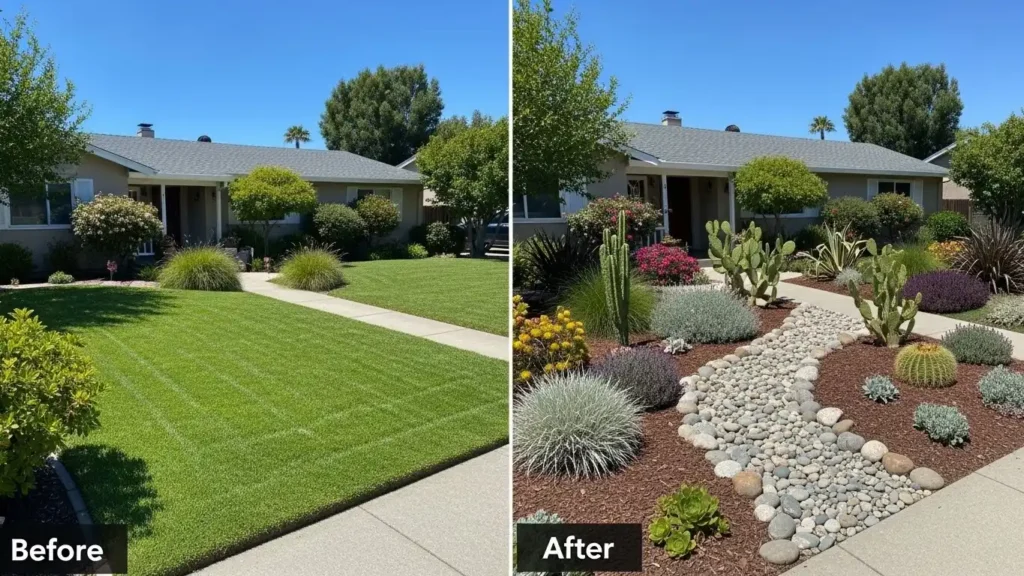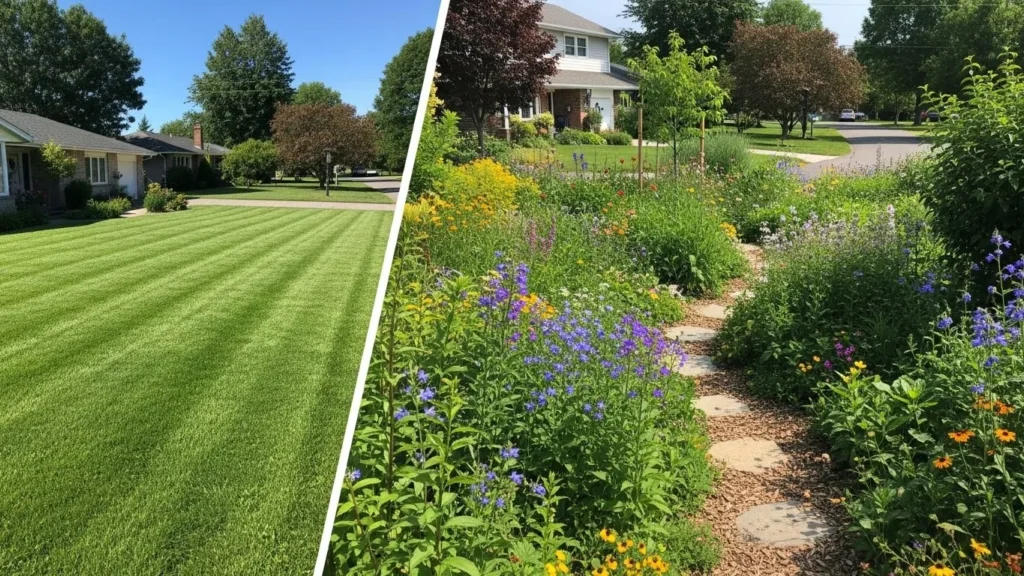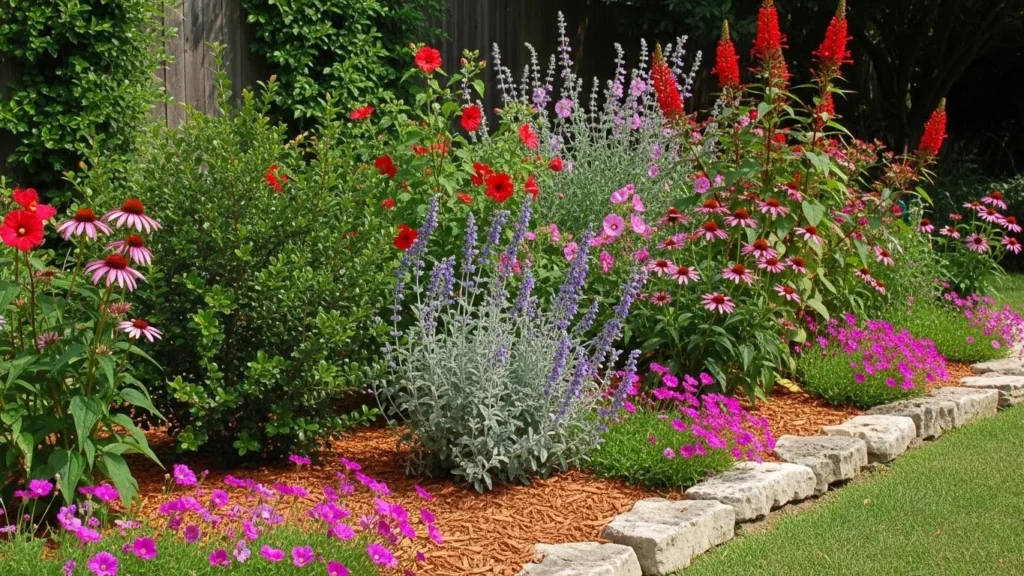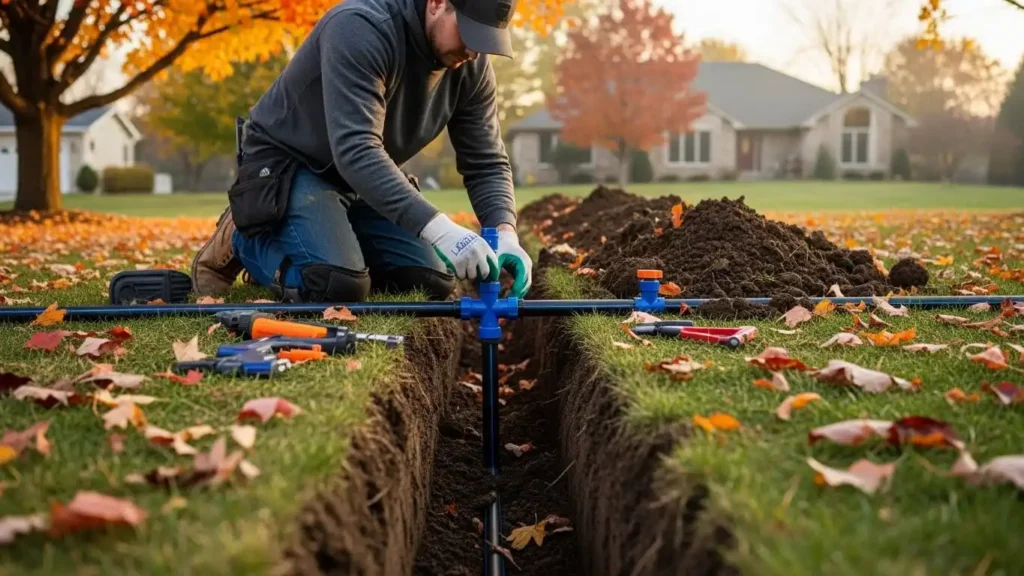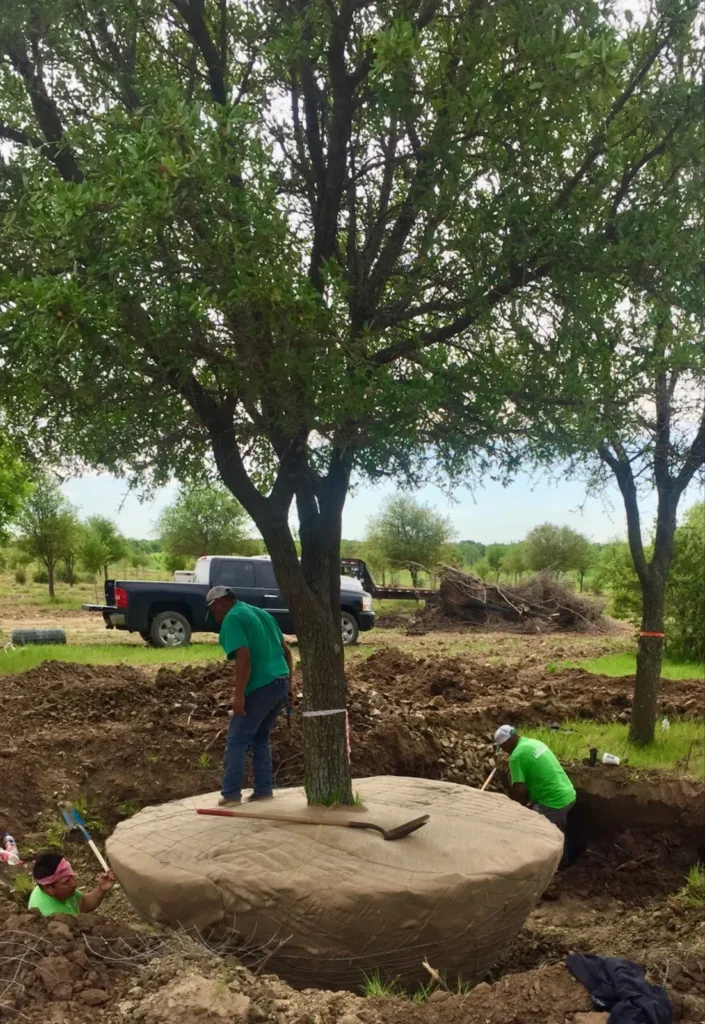Table of Contents
ToggleIntroduction
Drought-tolerant landscaping (or xeriscaping) is about creating a resilient, low-maintenance garden that looks beautiful year-round. The benefits are clear: lower water bills, less time spent on maintenance, healthier plants that survive extreme weather, and a landscape that supports local wildlife. This guide walks you through every stage, from design to maintenance.
Core Principles of Drought-Tolerant Design
- Right Plant, Right Place: Match plants to the correct sun, soil, and moisture conditions.
- Hydrozoning: Group plants with similar water needs on separate irrigation schedules.
- Soil Improvement: Build healthy soil structure with organic matter to hold water.
- Efficient Irrigation: Use drip systems and smart controllers instead of wasteful overhead sprinklers.
- Mulch Heavily: A thick layer of mulch reduces evaporation and suppresses weeds.
- Limit Turf: Reduce the size of your lawn, which is often the highest water user in a landscape.

A drought-tolerant planting with layered shrubs, grasses, and mulch reduces irrigation needs.
Soil First: The Foundation of Water-Wise Landscapes
Good soil is the key to using less water. For compacted clay, amend lightly with coarse compost to improve structure. For sandy soils, add organic matter to increase water retention. Finish by applying 2-3 inches of organic mulch (like wood chips or shredded bark) over all planting beds, keeping it a few inches away from plant stems.
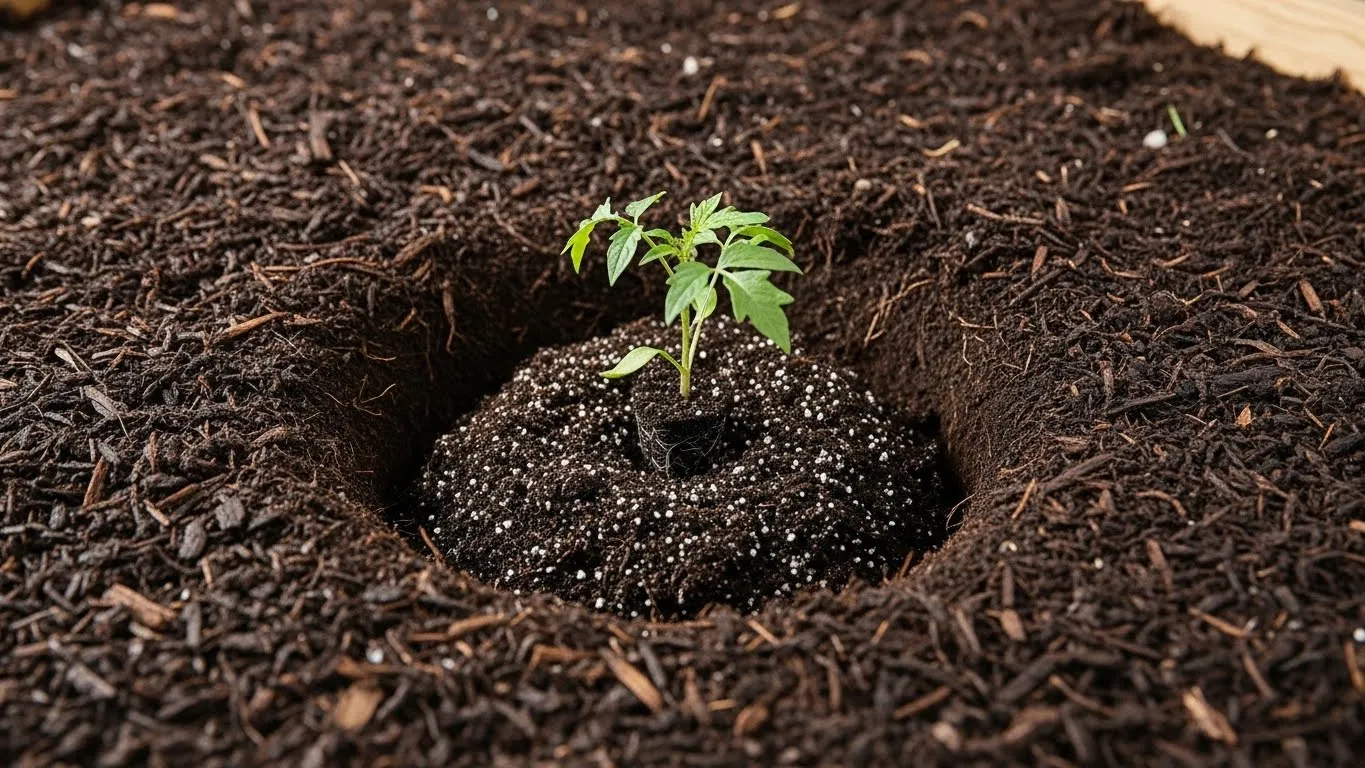
Correct planting technique and mulch are essential for establishment.
Plant Selection: Strategies and Plant Lists
Favor deep-rooted, native or regionally-adapted species. They have evolved to match local rainfall and temperatures, ensuring they thrive with minimal intervention.
Example Plants for Central Texas
- Trees: Live Oak, Texas Redbud, Mexican Plum
- Shrubs: Texas Sage, Yaupon Holly, Rock Rose
- Perennials: Autumn Sage, Gregg’s Mistflower, Black-eyed Susan
- Grasses: Little Bluestem, Sideoats Grama, Gulf Muhly

Native grasses like Gulf Muhly provide seasonal color and require little water.
Irrigation That Saves Water
An efficient irrigation system is crucial for establishing plants and saving water long-term.
- Use drip or micro-emitters for beds, trees, and shrubs to deliver water directly to the root zone.
- Program a smart controller to water deeply and infrequently, which encourages deep root growth.
- Check for leaks and clogged emitters at least twice a season.
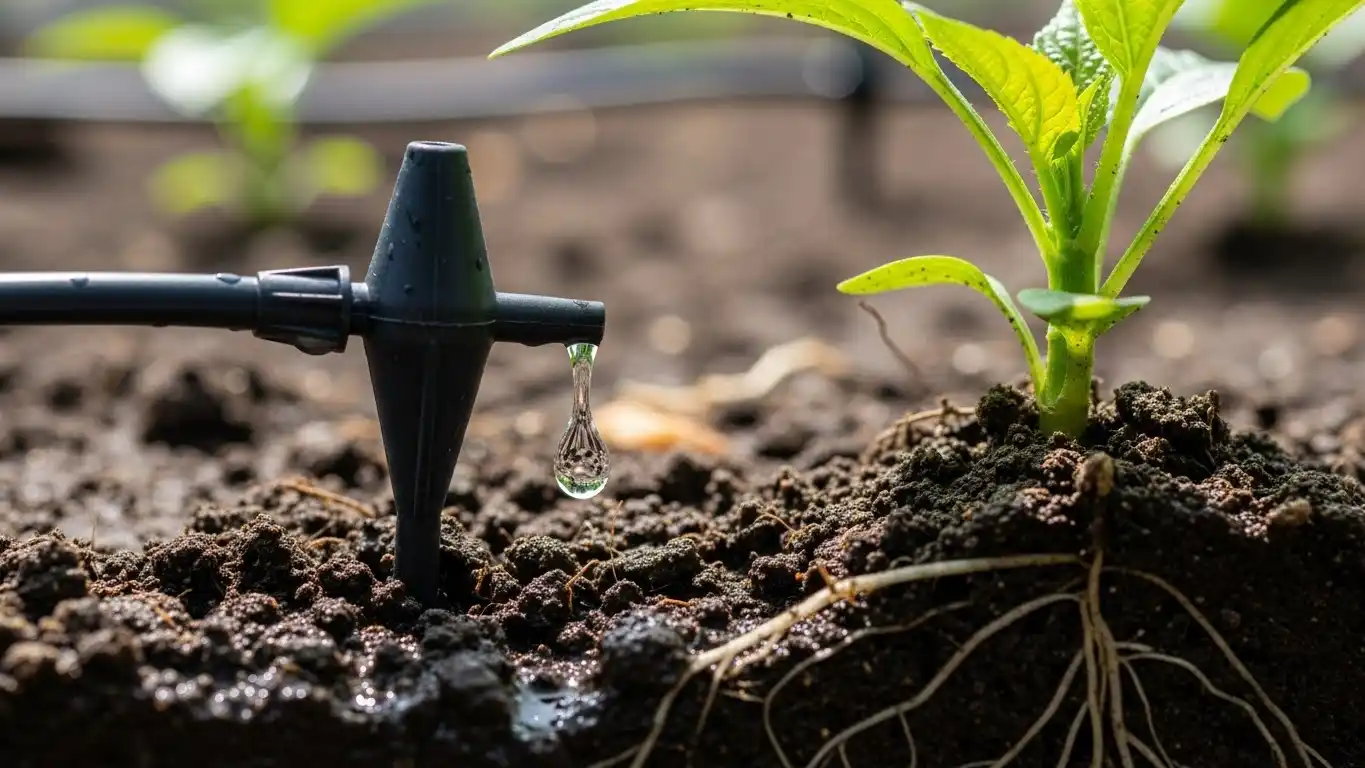
Drip irrigation targets the root zone and minimizes evaporation loss.
Hardscaping & Turf Alternatives
Replacing thirsty turfgrass with hardscaping and functional turf alternatives is one of the most effective ways to save water.
- Turf Alternatives: Consider low-water options like Buffalograss or native groundcovers like Frogfruit.
- Permeable Surfaces: Use decomposed granite for pathways or permeable pavers for patios to allow rainwater to soak into the soil.
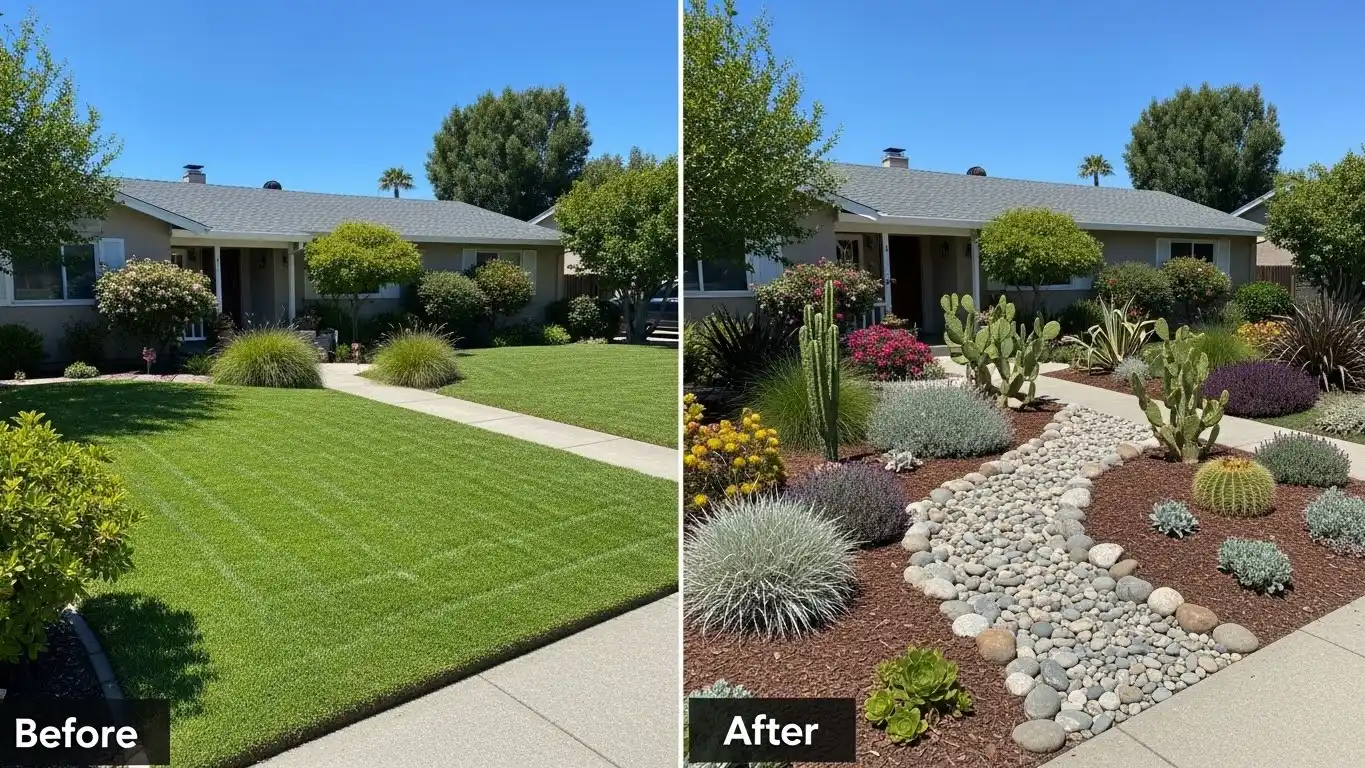
Replacing turf with native beds and permeable paths saves water and mowing costs.
Maintenance Schedule
- Year 1 (Establishment): Water regularly and weed monthly.
- Year 2 (Transition): Reduce watering frequency and refresh mulch in the spring.
- Long-Term (Year 3+): Water only during extended drought, inspect irrigation twice a year, and prune as needed.
FAQ
Will a drought-tolerant garden look barren?
Not at all! A well-designed xeriscape uses evergreens, structural grasses, and trees to provide year-round interest, with seasonal perennials for pops of color.
Can drought-tolerant plants also support pollinators?
Absolutely. Many low-water native species are excellent sources of nectar and pollen for bees, butterflies, and other wildlife.
Conclusion & Next Steps
A drought-tolerant landscape is a smart investment that combines thoughtful design, appropriate plants, healthy soil, and efficient irrigation. By investing in the first two years of care, you can create a garden that will reward you for decades with lower bills, less maintenance, and a more resilient, beautiful yard.
Written by Let Us Do It Landscaping (LUDI).
Need a custom planting plan or a full installation? Contact us for a quote!
